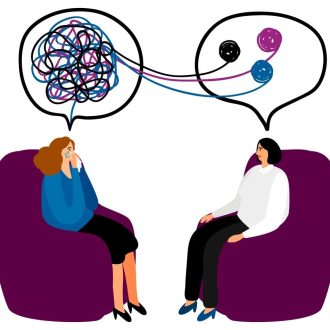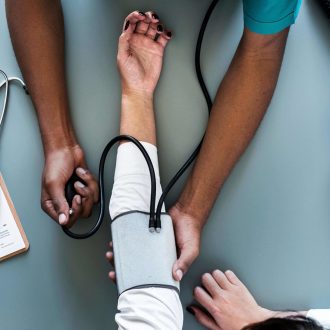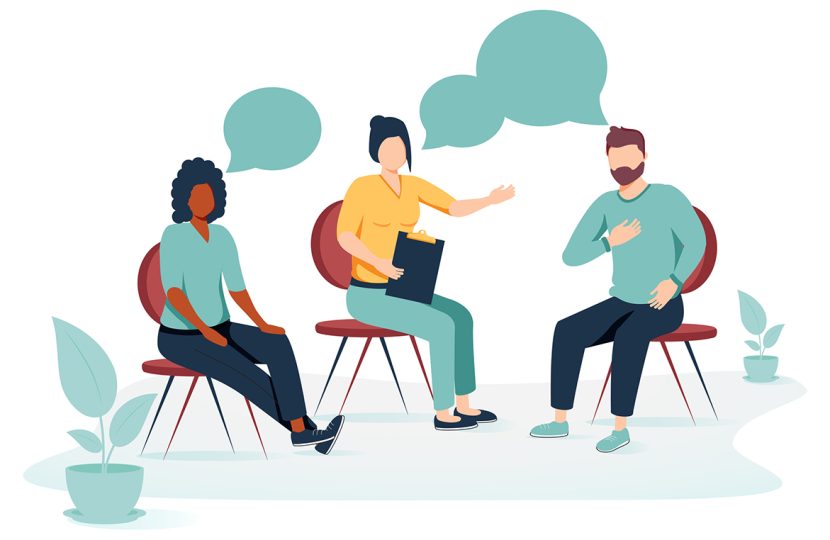

What we can do for you
Our Treatments
1

Detoxification (Detox)
2

Holistic and Alternative Therapies
3

Medication-Assisted Treatment (MAT)
4

Holistic and Alternative Therapies
Principles of Drug Addiction Treatment: A Research-Based Guide

Drugs of abuse alter the brain’s structure and function, resulting in changes that persist long after drug use has ceased. This may explain why drug abusers are at risk for relapse even after long periods of abstinence and despite the potentially devastating consequences.
- No single treatment is appropriate for everyone. Treatment varies depending on the type of drug and the characteristics of the patients. Matching treatment settings, interventions, and services to an individual’s particular problems and needs is critical to his or her ultimate success in returning to productive functioning in the family, workplace, and society.
- Treatment needs to be readily available. Because drug-addicted individuals may be uncertain about entering treatment, taking advantage of available services the moment people are ready for treatment is critical. Potential patients can be lost if treatment is not immediately available or readily accessible. As with other chronic diseases, the earlier treatment is offered in the disease process, the greater the likelihood of positive outcomes.
- Effective treatment attends to multiple needs of the individual, not just his or her drug abuse. To be effective, treatment must address the individual’s drug abuse and any associated medical, psychological, social, vocational, and legal problems. It is also important that treatment be appropriate to the individual’s age, gender, ethnicity, and culture.
- Remaining in treatment for an adequate period of time is critical. The appropriate duration for an individual depends on the type and degree of the patient’s problems and needs. Research indicates that most addicted individuals need at least 3 months in treatment to significantly reduce or stop their drug use and that the best outcomes occur with longer durations of treatment. Recovery from drug addiction is a long-term process and frequently requires multiple episodes of treatment. As with other chronic illnesses, relapses to drug abuse can occur and should signal a need for treatment to be reinstated or adjusted. Because individuals often leave treatment prematurely, programs should include strategies to engage and keep patients in treatment.
How are medications and devices used in drug addiction treatment?

Withdrawal. Medications and devices can help suppress withdrawal symptoms during detoxification. Detoxification is not in itself “treatment,” but only the first step in the process. Patients who do not receive any further treatment after detoxification usually resume their drug use
One study of treatment facilities found that medications were used in almost 80 percent of detoxifications (SAMHSA, 2014). In November 2017, the Food and Drug Administration (FDA) granted a new indication to an electronic stimulation device, NSS-2 Bridge, for use in helping reduce opioid withdrawal symptoms. This device is placed behind the ear and sends electrical pulses to stimulate certain brain nerves. Also, in May 2018, the FDA approved lofexidine, a non-opioid medicine designed to reduce opioid withdrawal symptoms.
Relapse prevention. Patients can use medications to help re-establish normal brain function and decrease cravings. Medications are available for treatment of opioid (heroin, prescription pain relievers), tobacco (nicotine), and alcohol addiction. Scientists are developing other medications to treat stimulant (cocaine, methamphetamine) and cannabis (marijuana) addiction. People who use more than one drug, which is very common, need treatment for all of the substances they use.
- Opioids: Methadone (Dolophine®, Methadose®), buprenorphine (Suboxone®, Subutex®, Probuphine® , Sublocade™), and naltrexone (Vivitrol®) are used to treat opioid addiction. Acting on the same targets in the brain as heroin and morphine, methadone and buprenorphine suppress withdrawal symptoms and relieve cravings. Naltrexone blocks the effects of opioids at their receptor sites in the brain and should be used only in patients who have already been detoxified. All medications help patients reduce drug seeking and related criminal behavior and help them become more open to behavioral treatments. A NIDA study found that once treatment is initiated, both a buprenorphine/naloxone combination and an extended release naltrexone formulation are similarly effective in treating opioid addiction. Because full detoxification is necessary for treatment with naloxone, initiating treatment among active users was difficult, but once detoxification was complete, both medications had similar effectiveness.
- Tobacco: Nicotine replacement therapies have several forms, including the patch, spray, gum, and lozenges. These products are available over the counter. The U.S. Food and Drug Administration (FDA) has approved two prescription medications for nicotine addiction: bupropion (Zyban®) and varenicline (Chantix®). They work differently in the brain, but both help prevent relapse in people trying to quit. The medications are more effective when combined with behavioral treatments, such as group and individual therapy as well as telephone quitlines.
- Alcohol: Three medications have been FDA-approved for treating alcohol addiction and a fourth, topiramate, has shown promise in clinical trials (large-scale studies with people). The three approved medications are as follows:
- Naltrexone blocks opioid receptors that are involved in the rewarding effects of drinking and in the craving for alcohol. It reduces relapse to heavy drinking and is highly effective in some patients. Genetic differences may affect how well the drug works in certain patients.
- Acamprosate (Campral®) may reduce symptoms of long-lasting withdrawal, such as insomnia, anxiety, restlessness, and dysphoria (generally feeling unwell or unhappy). It may be more effective in patients with severe addiction.
- Disulfiram (Antabuse®) interferes with the breakdown of alcohol. Acetaldehyde builds up in the body, leading to unpleasant reactions that include flushing (warmth and redness in the face), nausea, and irregular heartbeat if the patient drinks alcohol. Compliance (taking the drug as prescribed) can be a problem, but it may help patients who are highly motivated to quit drinking.
- Co-occuring conditions: Other medications are available to treat possible mental health conditions, such as depression or anxiety, that may be contributing to the person’s addiction.
How are behavioral therapies used to treat drug addiction?

modify their attitudes and behaviors related to drug use
increase healthy life skills
persist with other forms of treatment, such as medication
Patients can receive treatment in many different settings with various approaches.
Outpatient behavioral treatment includes a wide variety of programs for patients who visit a behavioral health counselor on a regular schedule. Most of the programs involve individual or group drug counseling, or both. These programs typically offer forms of behavioral therapy such as:
- cognitive-behavioral therapy, which helps patients recognize, avoid, and cope with the situations in which they are most likely to use drugs
- multidimensional family therapy—developed for adolescents with drug abuse problems as well as their families—which addresses a range of influences on their drug abuse patterns and is designed to improve overall family functioning
- motivational interviewing, which makes the most of people’s readiness to change their behavior and enter treatment
- motivational incentives (contingency management), which uses positive reinforcement to encourage abstinence from drugs
Treatment is sometimes intensive at first, where patients attend multiple outpatient sessions each week. After completing intensive treatment, patients transition to regular outpatient treatment, which meets less often and for fewer hours per week to help sustain their recovery. In September 2017, the FDA permitted marketing of the first mobile application, reSET®, to help treat substance use disorders. This application is intended to be used with outpatient treatment to treat alcohol, cocaine, marijuana, and stimulant substance use disorders. In December 2018, the FDA cleared a mobile medical application, reSET®, to help treat opioid use disorders. This application is a prescription cognitive behavioral therapy and should be used in conjunction with treatment that includes buprenorphine and contingency management. Read more about reSET® in this FDA News Release.
Inpatient or residential treatment can also be very effective, especially for those with more severe problems (including co-occurring disorders). Licensed residential treatment facilities offer 24-hour structured and intensive care, including safe housing and medical attention. Residential treatment facilities may use a variety of therapeutic approaches, and they are generally aimed at helping the patient live a drug-free, crime-free lifestyle after treatment. Examples of residential treatment settings include:
- Therapeutic communities, which are highly structured programs in which patients remain at a residence, typically for 6 to 12 months. The entire community, including treatment staff and those in recovery, act as key agents of change, influencing the patient’s attitudes, understanding, and behaviors associated with drug use. Read more about therapeutic communities in the Therapeutic Communities Research Report.
- Shorter-term residential treatment, which typically focuses on detoxification as well as providing initial intensive counseling and preparation for treatment in a community-based setting.
- Recovery housing, which provides supervised, short-term housing for patients, often following other types of inpatient or residential treatment. Recovery housing can help people make the transition to an independent life—for example, helping them learn how to manage finances or seek employment, as well as connecting them to support services in the community.
Is treatment different for criminal justice populations?

Scientific research since the mid-1970s shows that drug abuse treatment can help many drug-using offenders change their attitudes, beliefs, and behaviors towards drug abuse; avoid relapse; and successfully remove themselves from a life of substance abuse and crime. Many of the principles of treating drug addiction are similar for people within the criminal justice system as for those in the general population.
However, many offenders don’t have access to the types of services they need. Treatment that is of poor quality or is not well suited to the needs of offenders may not be effective at reducing drug use and criminal behavior.
In addition to the general principles of treatment, some considerations specific to offenders include the following:
- Treatment should include development of specific cognitive skills to help the offender adjust attitudes and beliefs that lead to drug abuse and crime, such as feeling entitled to have things one’s own way or not understanding the consequences of one’s behavior. This includes skills related to thinking, understanding, learning, and remembering.
- Treatment planning should include tailored services within the correctional facility as well as transition to community-based treatment after release.
- Ongoing coordination between treatment providers and courts or parole and probation officers is important in addressing the complex needs of offenders re-entering society.

